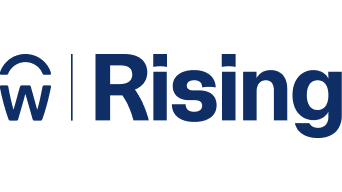Belonging and diversity have been thrust further into the spotlight over the last 12 months, as global business leaders, driven by myriad social factors, increased their commitment to improving their own organisations. Nicole Knott, managing director, Accenture, discusses the path to belonging and diversity with Daniela Porr, senior product marketing manager, Workday, and gives advice for organisations starting out on their equity and inclusion journey.
The following are highlights of what Knott shared with us.
In terms of belonging, diversity, and inclusion (BD&I), can you tell us how you see the landscape, given all that has happened over the last 12 months?
It's hard to believe that it’s been more than a year since the tragic death of George Floyd, which really placed the spotlight on the topic of race and ethnicity—and opened conversations that we'd never really had before in the workplace. And what we’ve seen is many companies making some big commitments to stand behind equity in the workplace.
It’s important that we continue to build this momentum because our people, both in our workplace and in our communities, are asking for change. We need to use this momentum to really drive change. That means getting laser focused on having the right support in place for all employees, taking into account many different dimensions of diversity, such as gender, religion, sexual orientation, gender identity, socio-economic background, and the other elements that make up the conversation around diversity.
Can you tell us about Accenture’s BD&I journey and how that has evolved?
It’s been a long journey stemming from around 1995 and has been a real priority for Accenture over that time. We’re seeing it move from a standalone concept to a holistic appreciation of culture. That means understanding the concept of being culture-makers and making the creation of an inclusive culture an organisational priority. Of course, it continues to evolve, based on what is happening in the world and what our employees need, but I’m immensely proud of the work that has been done. It has really transformed from an HR priority into an organisational norm, and that speaks volumes of our progress.
For businesses that are at the start of their journey, how should they communicate BD&I’s value to the business and other key stakeholders?
It seems crazy, given some of the global events we have been talking about, that many people are still hung up on business value and being able to articulate the value of a more inclusive and equitable approach. I think most people know they should care about this, but they still need a push to turn ideas into action.
According to Accenture research "Who We Are Is How We Grow," 42% of leaders say that the reason they don't have targets around building inclusive environments is that not all of their organisation leaders think it's important yet. And 40% of those people also say it's hard to link those targets to business priorities. Yet, the white paper “Hacking Diversity With Inclusive Decision Making” shows that diverse organisations make decisions 60% faster than non-diverse organisations.
And BD&I is current. Today, there's a big focus on the talent leakage in organisations. For a long time, people were not moving their roles, but as the market starts to open up, more and more people are considering moving roles. We’re talking about roughly 25% of people who are thinking about bolting post-pandemic.










